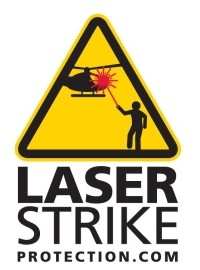Wed, Mar 09, 2011
Expands Laser Eye Protection Program (LEPP) For Greater
Safety
Night Flight Concepts has responded recent FAA reports of a
record number of laser strike incidents in 2010 by announcing at
Heli-Expo 2011 the expansion of their new Laser Eye Protection
Program to help aircraft operators improve safety and prevent the
risk of eye damage.

On January 18th, the FAA reported that the number of incidences
of laser strikes into cockpits has continued to trend upwards,
growing to a record number in 2010. U.S. Transportation Secretary
Ray LaHood was quoted outlining the severity of this problem:
“This is a serious safety issue,” he asserted.
“Lasers can distract and harm pilots who are working to get
passengers safely to their destinations.” Known effects of
laser light irradiation on an aircrew can range from mild to
severe. Transient visual effects can include loss of situational
awareness, to startle or temporary “flash” blindness to
stinging and tearing. Longer-term effects can include retinal
damage.
In response to this growing safety concern, Night Flight
Concepts recently joined forces with Delta P – a consulting
company specializing in aerospace physiology – to develop an
expanded Laser Eye Protection Program (LEPP). The LEPP is a timely
and cutting edge training program to teach aircrew members the
capabilities, limitations and preventative measures required to
respond to a laser strike. The program addresses the need for
education about laser strikes and covers mitigation techniques most
effective in the public safety sector of aviation. Upon completion
of the program, students have a sound understanding of the affects
of lasing, methods for mitigating the problem and recommendations
for safety management systems, including mandatory requirements for
pilot/crew retinal scans to establish vision performance
baselines.

Night Flight Concepts has posted industry and government
information on laser strikes, the LEPP training and support
information to its website – the new online resource site for
Night Vision Goggle (NVG) safety and education. Information will
soon be posted to the new, associated resource site,
LaserStrikeProtection.com designed to help organizations
understand, and respond to, the laser strike issues.
More News
Also: B-29 Superfortress Reunion, FAA Wants Controllers, Spirit Airlines Pulls Back, Gogo Galileo Van's Aircraft posted a short video recapping the goings-on around their reorganiz>[...]
Light Gun A handheld directional light signaling device which emits a brilliant narrow beam of white, green, or red light as selected by the tower controller. The color and type of>[...]
"The journey to this achievement started nearly a decade ago when a freshly commissioned Gentry, driven by a fascination with new technologies and a desire to contribute significan>[...]
"Our driven and innovative team of military and civilian Airmen delivers combat power daily, ensuring our nation is ready today and tomorrow." Source: General Duke Richardson, AFMC>[...]
Aircraft Conflict Predicted conflict, within EDST of two aircraft, or between aircraft and airspace. A Red alert is used for conflicts when the predicted minimum separation is 5 na>[...]
 Airborne 04.16.24: RV Update, Affordable Flying Expo, Diamond Lil
Airborne 04.16.24: RV Update, Affordable Flying Expo, Diamond Lil ANN's Daily Aero-Term (04.20.24): Light Gun
ANN's Daily Aero-Term (04.20.24): Light Gun Aero-News: Quote of the Day (04.20.24)
Aero-News: Quote of the Day (04.20.24) Aero-News: Quote of the Day (04.21.24)
Aero-News: Quote of the Day (04.21.24) ANN's Daily Aero-Term (04.21.24): Aircraft Conflict
ANN's Daily Aero-Term (04.21.24): Aircraft Conflict




